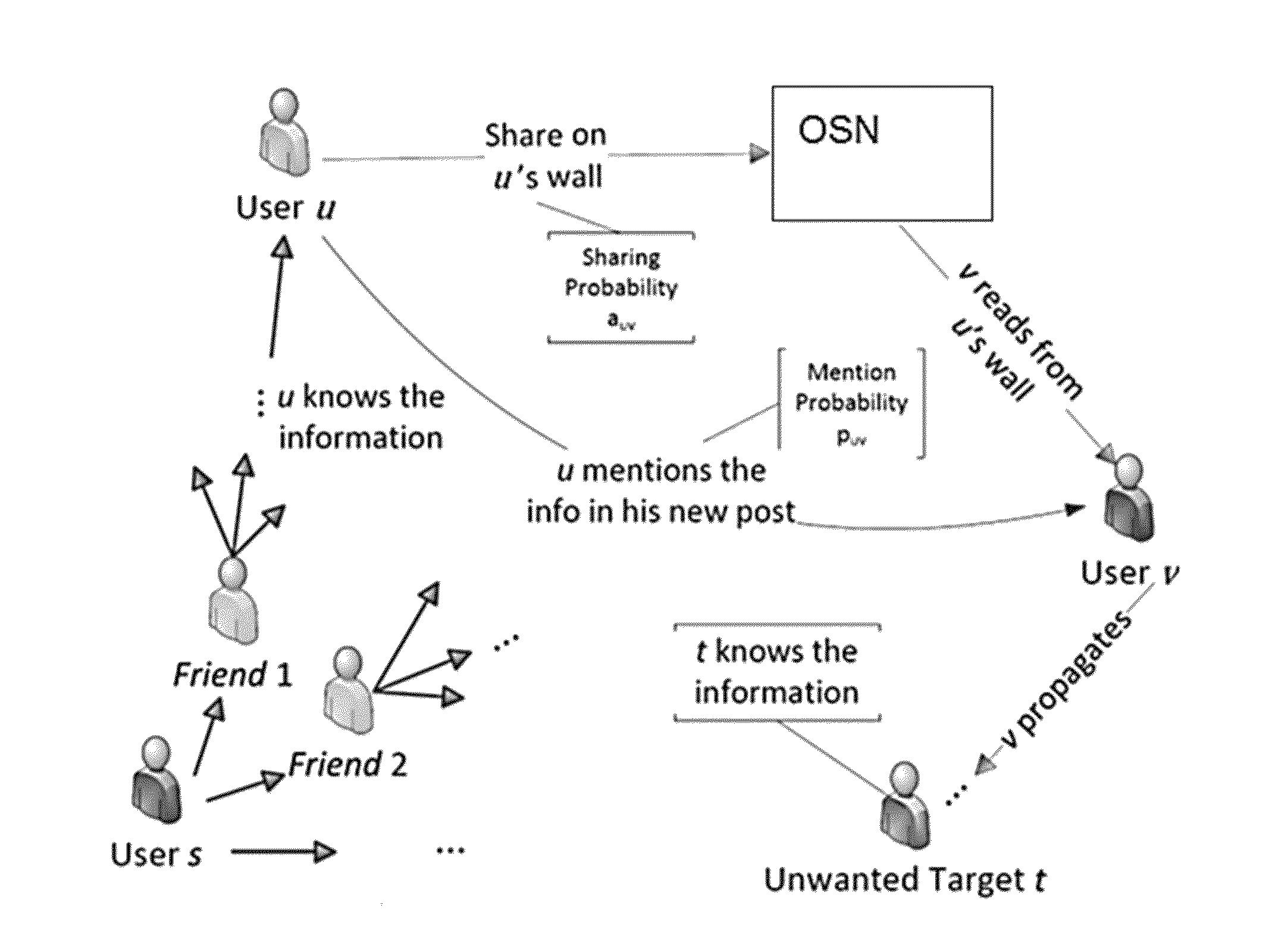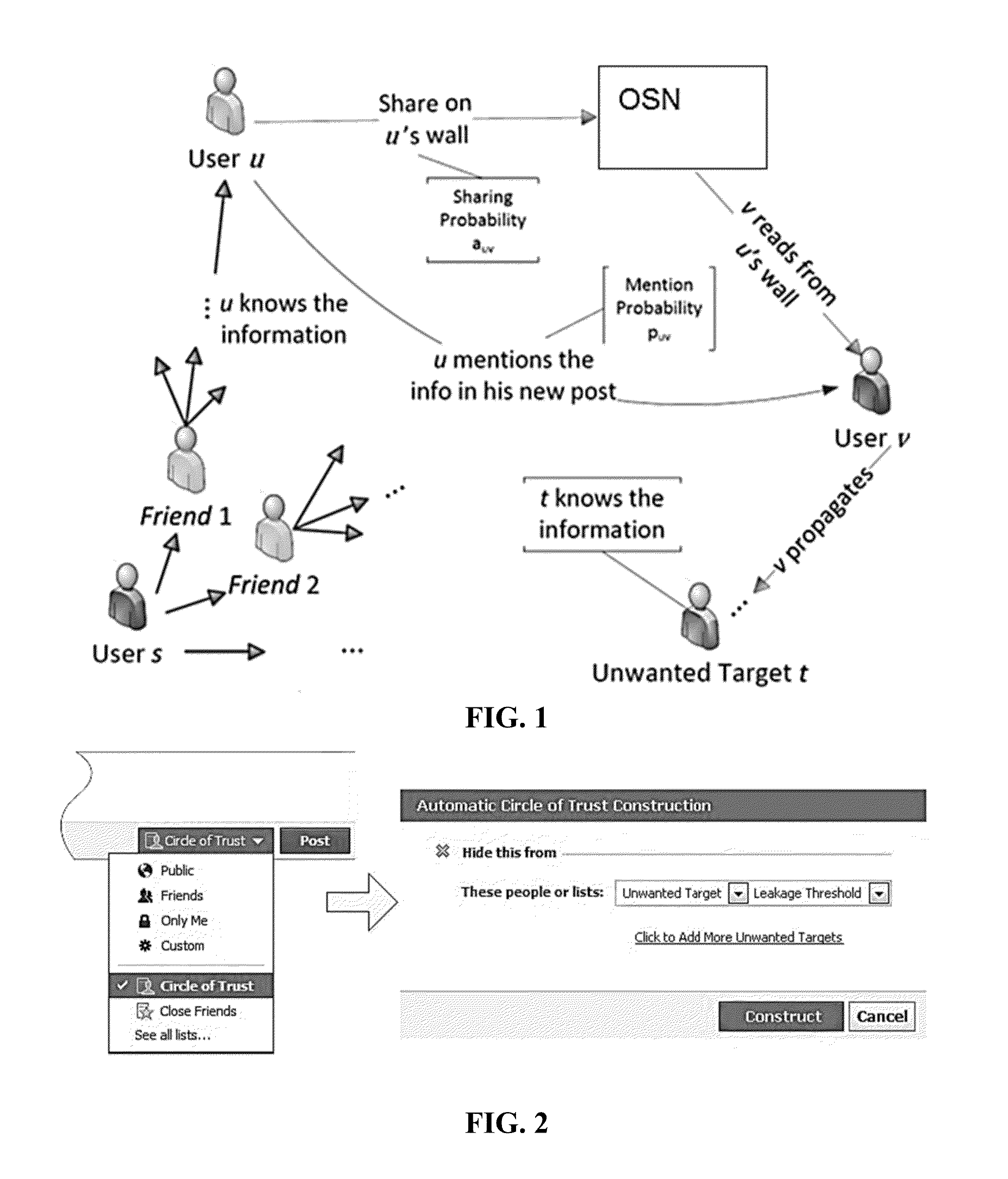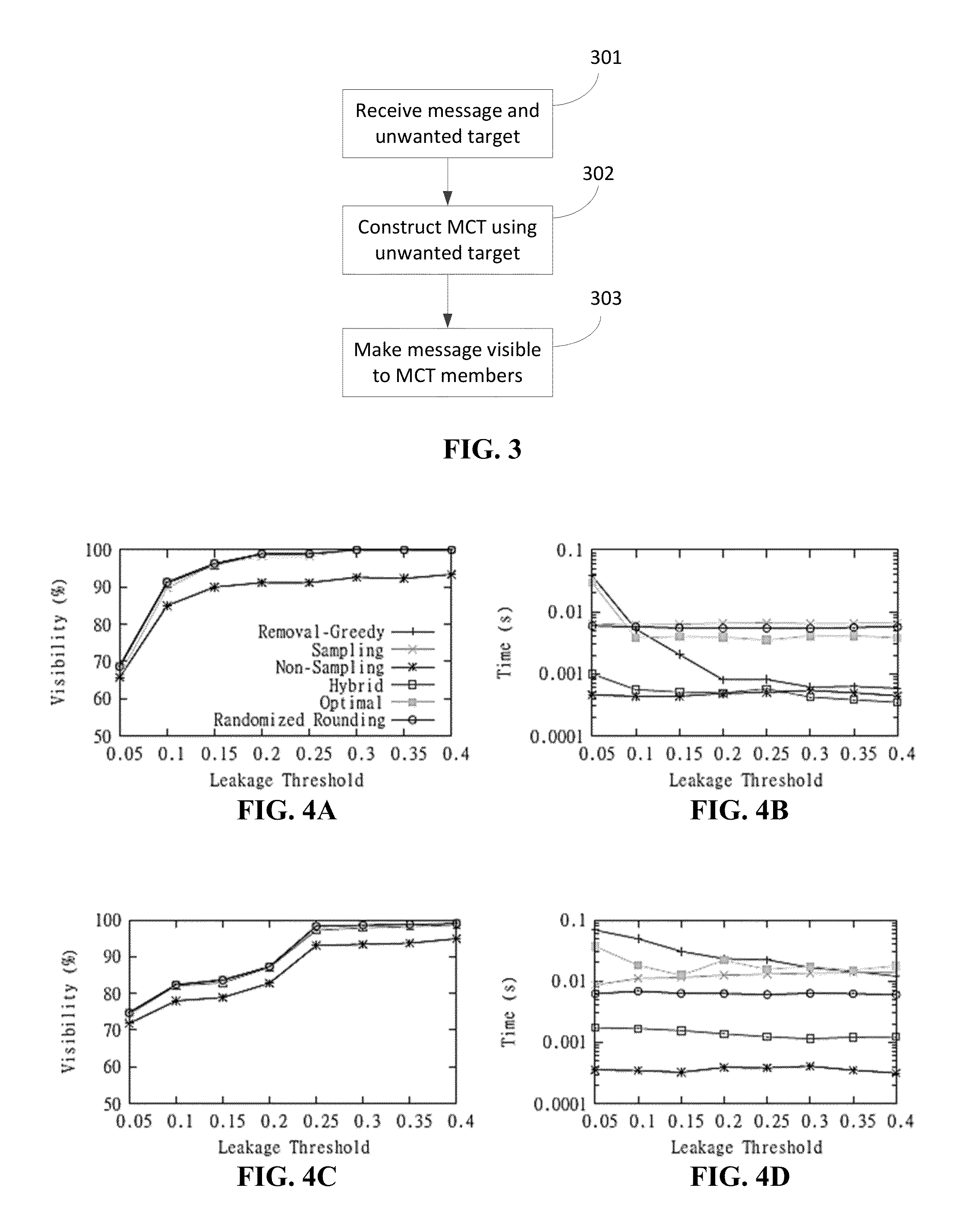Maximizing circle of trust in online social networks
a social network and trust technology, applied in the field of maximizing the circle of trust in online social networks, can solve the problems of inability to hide new messages from chuckers, information may be spread to many unwanted targets, etc., and achieve the effect of maximizing the dissemination of information
- Summary
- Abstract
- Description
- Claims
- Application Information
AI Technical Summary
Benefits of technology
Problems solved by technology
Method used
Image
Examples
example 1
Experimental Study
[0114]Experiments were performed on a collection of large OSNs to measure the efficiency of the various algorithms described herein in accordance with certain embodiments of the invention and apply those algorithms to provide better insights into the information leakage process in social networks.
[0115]Experiments were performed on three real-world OSNs, including Facebook, Twitter and Foursquare. The statistics of the used networks can be found in Table 1. The Facebook dataset is obtained from Viswanath et al. “On the Evolution of User Interaction in Facebook,” Proceedings of WOSN'09, August 2009. The Twitter dataset is extracted from the Twitter network provided by Cha et al. “Measuring User Influence in Twitter: The million Follower Fallacy,” Proceedings of the 4th International AAAI Conference on Weblogs and Social Media (ICWSM), May 2010, by applying the unbiased sampling method in Gjoka et al. “Walking in Facebook: A case study of unbiased sampling of OSNs,” ...
example 2
Case Study can Celebrities Keep their Secrets?
[0141]Several observations were obtained by solving LP(2) (δ=2) and using the Hybrid method (δ=3) that give the best performance in general.
[0142]The question as to whether or not “celebrities”, users with a large number of friends or followers, can only share their information with a small number of their friends to avoid information leakage was investigated. This was carried out by focusing on the relation between the degree of the source and their CT sizes. Intuitively, when a user has more friends, there is a high chance one or more of his friends will forward the information further. Thus, to avoid information leakage, it would be expected that the CT of “celebrities” would include only a small fraction of their friends. To verify the hypothesis, source users were selected with different degrees, increasing by 1% of the maximum degree in each step. For each source, ten random sets of five unwanted targets where selected and the aver...
example 3
Case Study can we Trust Our Popular Friends?
[0144]There is an incentive not to share our sensitive information to a popular person (celebrity) who could easily leak the information further. In other words, the friends of a celebrity may be less likely to trust that person. To investigate the effect of the “celebrity level,” 10 users with different degree were selected in each network, incrementing by 10% of the maximum degree. For each “celebrity,” each of his neighbors were selected to be the source and the percentage that the “celebrity” was included in his friends' CTs was computed.
[0145]As illustrated in the FIG. 7, the “trust level” of the friends for a user decreases quickly when the degree of the user increases, i.e. when the user becomes more popular. However, even for the user with the highest degree, half of his friends still can trust him as in the cases of Facebook and Foursquare. For Twitter, only 20% of the friends can trust the considered user. This can be explained b...
PUM
 Login to View More
Login to View More Abstract
Description
Claims
Application Information
 Login to View More
Login to View More - R&D
- Intellectual Property
- Life Sciences
- Materials
- Tech Scout
- Unparalleled Data Quality
- Higher Quality Content
- 60% Fewer Hallucinations
Browse by: Latest US Patents, China's latest patents, Technical Efficacy Thesaurus, Application Domain, Technology Topic, Popular Technical Reports.
© 2025 PatSnap. All rights reserved.Legal|Privacy policy|Modern Slavery Act Transparency Statement|Sitemap|About US| Contact US: help@patsnap.com



